#eip
Explore tagged Tumblr posts
Text
FTH 2025 Supported Org: Environmental Integrity Project
Climate crisis is here, and it’s urgent. Rising global temperatures and shrinking wildlands have caused a cascade of disasters for humans and non-humans alike. But although some of the effects of climate change are beyond the point of reversal, many can still be rolled back or avoided entirely – if we all work together.

EIP uses legal expertise and technical analysis to combat the air and water pollution, challenge permits that are too lax to protect public health, take legal actions against big polluters, advocate for stronger regulations, and release reports and data to inform the public about the many problems caused by fossil fuels. They also scrutinize the water and air emissions from factory farms, and use this data as part of their national efforts to push EPA to more closely regulate the pollution that livestock and agricultural runoff dump into our waterways.
You can support Environmental Integrity Project as a creator in the 2025 FTH auction (or as a bidder, when the time comes to donate for the auctions you’ve won.)
#fth 2025#environment#climate change#environmental integrity project#eip#supported organization#supported nonprofit
33 notes
·
View notes
Text
EIP missing scene (because we all need a little light-heartedness from that episode)
Zuko: As soon as we defeat the Firelord, I'm sending a very strongly worded cease and desist letter to those idiot writers
Katara: You can't do that, Zuko, that's censorship
Zuko: *mutters something unintelligible*
#I know he technically didn't know he was going to be fire lord at this point but let me have my fun#zuko#katara#zutara#eip#atla#avatar the last airbender#incorrect quotes#atla incorrect quotes#zutara incorrect qoutes
133 notes
·
View notes
Text
ATLA headcanon
Ursa views the Ember Island Players as a comedy act and loves it. The troop is not fond of this, wanting to be taken seriously, but they don't say anything because the princess is their biggest donor.
#atla#ursa#eip#ember island players#ursa's cringe fail humor#atla headcanons#ursa: *laughing her butt off*#rest of fire family: 😑
53 notes
·
View notes
Photo
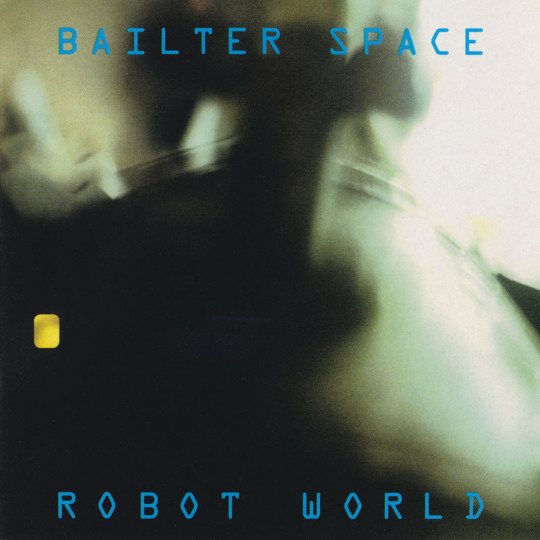
6:00 PM EST February 25, 2025:
Bailter Space - "Eip" From the album Robot World (April 8, 1993)
Last song scrobbled from iTunes at Last.fm
Release date given is for the US version through Matador. Robot World was the first album Matador released after inking the distribution deal with Warner Brothers.
File under: Southern (Hemispheric) Youth
0 notes
Text
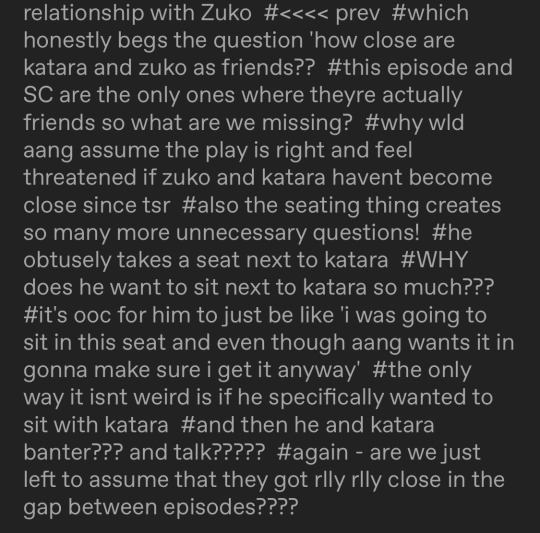
YES! And then if we look at this from in universe, the writers for the play, while doing their research somehow got the idea that Zuko & Katara had romantic tension! That means that side characters are even seeing it. They could be using Zutara to get the people to hate Zuko since this is a propaganda play. That doesn’t change the fact that the writers had to get this idea from SOMEWHERE!
Ember Island Players and Zutara
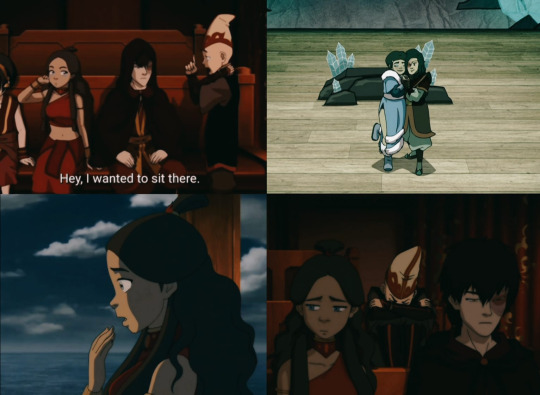
Two approaches to analyzing literature are Doylist and Watsonian: Warsonian is about analyzing from an in-universe perspective, Doylist is about analyzing out-of-universe perspective.
For example: Why did the Gaang arrive at the swamp?
Watsonian: Because hurricane made them crash.
Doylist: Because the writers wanted to explore the world & characters, foreshadow Toph, introduce plant benders, etc.
This analysis will be from a Doylist perspective. Meaning, I don't intend to prove Katara secretly canonically loved Zuko. She is a fictional character, she'll love whoever the writers want her to love. And the writers said she loved 𝖠𝖺𝗇𝗀. What I do intend to do is to how the writing alluded to Zuko standing in 𝖠𝖺𝗇𝗀's way to being with Katara.
With that out of the way, let's dive right in!
At the beginning of the episode, when they sit down to watch the play, Zuko and 𝖠𝖺𝗇𝗀 share this exchange:
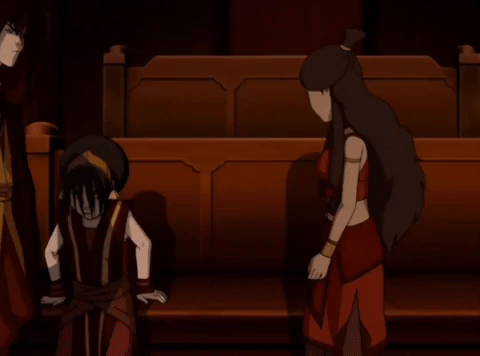
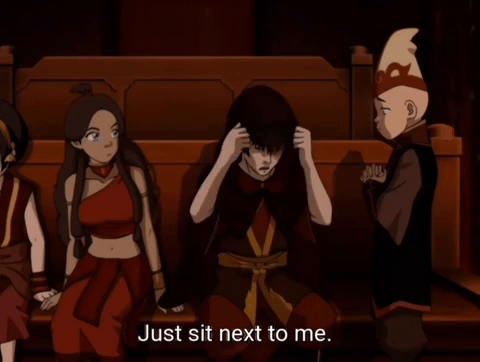
If you didn't catch that, look at Katara:
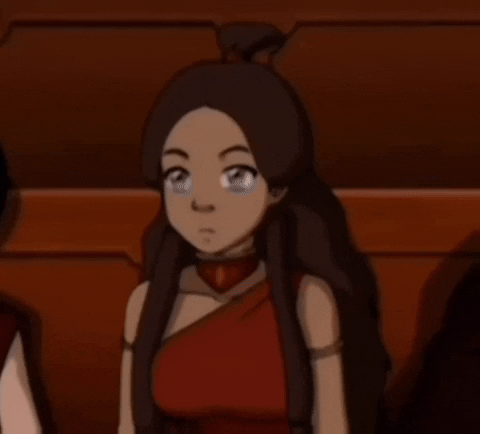
This is a classic romance trope, typically used for female characters, to signify romantic feelings/a crush. But what is it doing here, when Zuko next to Katara instead of 𝖠𝖺𝗇𝗀? What is this interaction doing here in the first place?
When an episode aims to explore an aspact of the characters, it will remind the audience of it in the beginning. In The Waterbending Scroll, Katara steals a waterbending scroll and gets insecure about her waterbending. The episode opens with the Katara teaching 𝖠𝖺𝗇𝗀 waterbending and getting insecure. In this instance, they want you to keep in mind the dynamic where... Zuko is in the way of 𝖪𝖺𝗍𝖺𝖺𝗇𝗀? (That's without mentioning what Katara's doing with her hair). That is strange.
Moving on to the play – See the joke about Katara's characterization in the play:
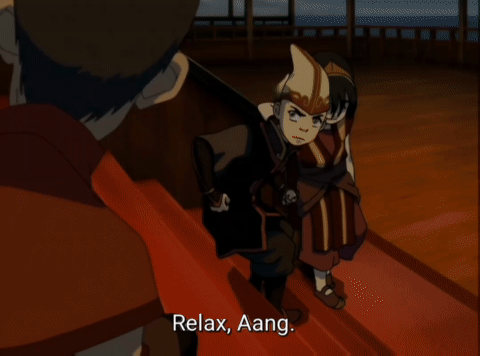
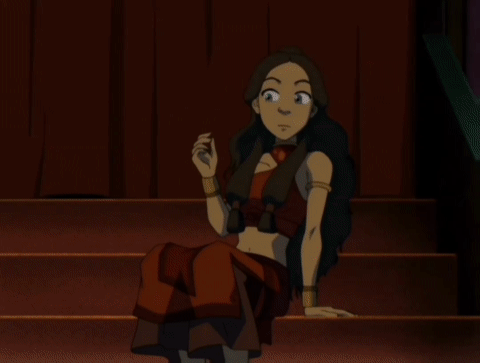
The point of Ember Island Players is while the play is heavily distorted, it is somewhat based on reality. It's funny and even gets under the character's skin sometimes because it shows them a parody of themselves. (Further evidence).
When we get to the the scene between Zuko and Katara in the Crystal Catacombs, for some reason, it's portrayed as some romantic moment.
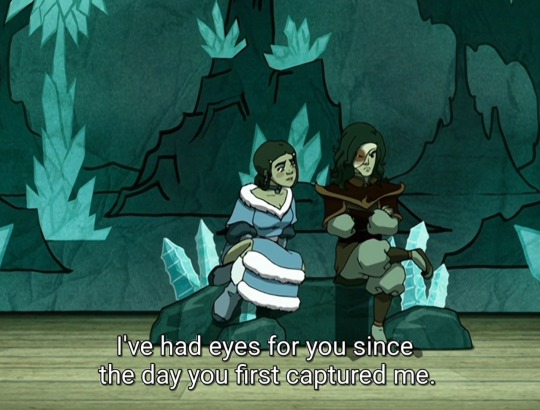
Acknowledge a fan pairing in canon from is always out of the blue/baity from the get-go. I cannot recall a time when another show that did this. Here however, it's under the premise of somewhat founded parody. Which begs the question:

(Side note: There's been debate over Katara and Zuko moving away from each other. It's common for eventual romantic leads to deny attraction. It could be contextualized that way later and audiences aren't trained to rule out the pairing. The meaning is dereminted by the outcome).
Despite that, Katara and Zuko aren't in love. Everyone knows this, right?
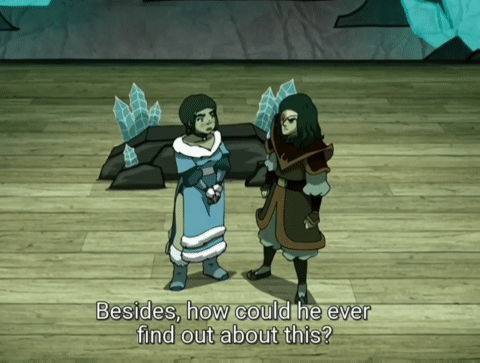
𝖠𝖺𝗇𝗀's jealous. Jealous to the point where he gets up and leaves the theater. The thing that kicks off the conflict of 𝖪𝖺𝗍𝖺𝖺𝗇𝗀 is... Zutara?
Speaking of the conflict, I won't dwell on it too much, but the events were the following: 𝖠𝖺𝗇𝗀 adressed the kiss they shared in the invasion, a kiss that went unaddressed for 5 episodes. Katara is unable to commit to an answer. Her lines, isolated:
"𝖠𝖺𝗇𝗀, I don't know" // "This isn't the right time" // "Right now, I'm just a little confused".
Until he kisses her once again.
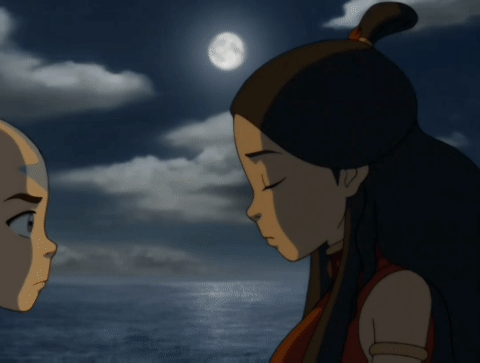
And realistically, she doesn't take it well. Many girls use this language to reject gently. This is purposely written to suggest that they might not end up together. All of which is kicked off because of Zutara. Remember the beginning: Zuko is in the way of 𝖪𝖺𝗍𝖺𝖺𝗇𝗀.
When 𝖠𝖺𝗇𝗀 is back in the theater, he's concerned about his future with Katara. It is showcased with this shot:
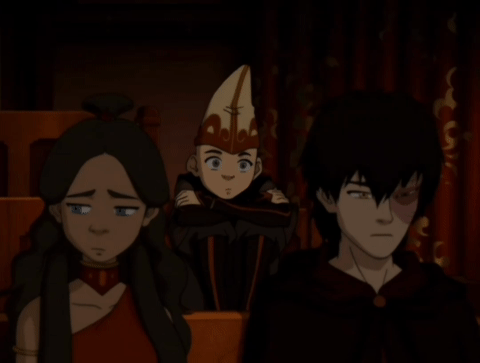
𝖠𝖺𝗇𝗀 isn't angry at Zutara here, so why is Zuko in the shot? A director storyboarded this, it was planned. They could have easily leave him out of it and it would convey the message better. Leaving him here implies that he is somehow related to the conflict, That Aang is worried about them, while both of those things aren't true.
𝖠𝖺𝗇𝗀 not being able to sit next to Katara isn't ship baiting. 𝖠𝖺𝗇𝗀 getting angry at actress!Katara not returning his feelings isn't ship baiting. Katara herself being unable to immediately return his feelings isn't ship baiting. What is ship baiting is how all of this is caused by Zuko to a degree.
Zuko stealing 𝖠𝖺𝗇𝗀's seat and Katara giving him a side glance is ship baiting. Zutara being canonically addressed in a play that's vaguely founded is ship baiting. The former causing 𝖠𝖺𝗇𝗀 feeling jealous, leaving, and starting the conflict over it is ship baiting. Zutara is imbedded in the foundations of the episode. Ember Island Players plays out as if there is something between Zuko and Katara, when there isn't. That's ship baiting.
780 notes
·
View notes
Text

At ABC Malaysia, we’re dedicated to providing exceptional Speech Therapy in Kuala Lumpur and surrounding areas. Our Speech Center in Selangor offers personalized assessments and interventions to help individuals of all ages overcome communication challenges. Whether you're seeking support for speech delays, language disorders, or articulation issues, our experienced therapists use evidence-based techniques to foster progress and confidence. Located conveniently in Kuala Lumpur and Selangor, our centers are equipped with the latest tools and a nurturing environment to ensure the best outcomes. Discover how our tailored Speech Center in Selangor plans can make a difference. Contact us today to schedule a consultation and take the first step towards enhanced communication skills.
0 notes
Text
Ethereum Set for Ascension? Deflation, Staking Boom, and Significant Upgrades Point to Potential Takeoff
Ethereum is currently witnessing a deflationary trend, marked by the burning of $13 million worth of ETH in the last month. This substantial reduction in supply, amounting to 5,619.39 ETH, indicates the potential for a bullish rally in the cryptocurrency.
The deflationary pressure on Ethereum stems from its burning mechanism, which has incinerated 74,933.24 ETH, surpassing the 69,313.86 ETH issued during the same period. This trend could have significant implications for Ethereum's market dynamics, potentially paving the way for an upcoming bullish surge.
A close examination of the Ethereum chart highlights the potential breakthrough of the 50-day Exponential Moving Average. Positioned just below this crucial level, Ethereum's price movement above it could signify a shift in market sentiment, potentially triggering upward price momentum.
Ethereum's appeal as a hedge against inflation is strengthened by various factors, including its transition to Proof-of-Stake (PoS) in September 2022 and the implementation of the EIP-1559 burn mechanism, rendering ETH a deflationary asset. Staking, with a quarter of the total ETH supply currently locked, is gaining momentum, creating a positive feedback loop that reduces selling pressure.
The decreasing amount of ETH held on exchanges, coupled with anticipated developments like EIP-4844 and token launches from prominent Ethereum projects, sets the stage for a bullish scenario for ETH prices.
0 notes
Text
Yaassss I love this!
Zutara Shipping is Canon
Let me explain myself.
I was enjoying an afternoon walk (as I mercifully live in a decent area to go for walks to clear my head) and I started thinking about the Ember Island Players episode when it struck me.
Shipping Zutara is canon.
Now, don't get me wrong, this isn't about if Zutara itself is canon or not (it's totally canon and I will die on my hill of willful self-delusion), but about shipping it.
I'm sure most Zutara shippers still get a little thrill whenever we rewatch the show and our majestic bounty-hunter June, captain of the Zutara ship, calls Katara Zuko's girlfriend.
But, as I said, this is about Ember Island Players.
It never truly occurred to me before that, in canon, Zutara shipping is just a thing. Like, an actual, accepted aspect of the world.
When Puon-Tim wrote "The Boy in the Iceberg," he just outright included a Zutara subplot. And as annoyingly melodramatic as it was, it was still there. He even went out of his way to discredit the idea of Katara and Aang being together. And, even though the play is Fire Nation propaganda (which has since confused me since the wiki says that Puon-Tim is from the Earth Kingdom; though that feels like a retcon), it doesn't seem to show a Zutara romance in a negative way.
And it could've gone in that direction. As propaganda, it would have been only too easy to portray Katara as an evil seductress who corrupted Prince Zuko and convinced him to betray his country. But it doesn't. The Zutara scene is embarrassingly saccharine and schmaltzy, but it's not shown as being bad - except for the episode trying to frame it that way because it hurts Aang's feelings.
And, because of how popular the play seems to be, we can reasonably assume that there were audience members who left the theater as die-hard Zutara fans. Even if they were cheering for Zuko's death - because, y'know, Fire Nation - there weren't any boos at the Zutara scene. Like, some of those folks who cheered Zuko's death also probably regarded Zutara as a tragic love story. There were probably even a few who quietly whispered to each other that they hoped Prince Zuko would run off with Katara and have a happy ending instead of fighting for the throne and dying, as shown in the play.
And with how the war actually ended, Zutara shipping probably only got more popular as Zuko started reforming stuff and being an actually stable ruler as opposed to his psycho dad and sister.
So, with this in mind, Puon-Tim is the ultimate Zutara shipper. Zutara shipping is canon.
I don't really know what else to say.
Any thoughts?
#zutara#avatar the last airbender#zuko#katara#headcannon#anti kataang#fan theory#but wait#meta#analysis#show analysis#eip#ember island players#ship it
446 notes
·
View notes
Text
There is only one way to make a truly wonderful Avatar adaptation, not matter how bad it turns out to be:
A professionally shot, full length stage production of the Ember Island Players' Fire Nation propaganda version of the events
#avatar the last airbender#Atla#Think about it! It has no downsides!#There's only a few scenes that are fleshed out in the show so they can reference or fully do those and expand elsewhere#Even if the scenes are done poorly of course they are#Bad casting choices? Typical of the EIP!#The only casting choice that matters is the biggest buffest dude for Toph#There could be a behind the scenes feature during the intermission to show all the special effects#And there could be character cameos but not anywhere close to the camera so they are vague figures in the background
9K notes
·
View notes
Text

Racing Miku 2025!
#people REALLY liked a eip i posted of her leg#i dont super know whyyy??#velvette army#art#digital art#fan art#artists on tumblr#hatsune miku#miku#vocaloid#miku hatsune#mecha#mecha miku#racing Miku 2025#racing miku
1K notes
·
View notes
Text
Oh I 100% agree. I just included that because I've heard so many Kat-aang fans and Aang stans say that scene was actually okay or that he realized what he did was wrong because he said that. I've tried very hard to see it that way, but the fact is even if he said that because he upset her and not because he blew his shot, he never apologized to her, which means he didn't value her feelings at all.
Sometimes I just think of fan interpretations of the cut-away between Zuko telling Katara that he knows where the man who killed her mother is and her packing things and getting ready to leave, and Aang and Katara having their last in-person interactions on screen (when they are lone together in EIP and when they are in a group in the finale) be fights to them kissing at the end.
People who support Kat-aang and do not like Zutara (and specifically comment in the Zutara tag about this) often say that Zuko had to convince Katara to go after her mother's killer. A lot of those people also assume that Aang must have apologized to Katara off-screen for the EIP kiss.
I have had a lot of people who share these interpretations accuse me and other people of not having "media literacy" because we can't clearly understand he must have apologized off screen. The irony is that is the exact opposite of the truth.
The cut away between Zuko telling Katara he knew how to find her mother's killer and her getting ready to leave signifies swiftness. Her response to this knowledge is so clear that showing her reaction would actually take away from conveying it. Things are moving fast, her mind was made up right away and she kept moving so the scene did too. And because she is moving so quickly, the audience can fill in the fact that any conversation she may have had with Zuko about this (How do you know this? When did you find out? etc.) did not play a role in her decision to find her mother's killer.
We know from both her past actions (being haunted by her mother's death, her righteous fury) and her future ones (trying to take Appa without talking to Aang or anyone else, telling Sokka that he didn't love their mother like she did, bloodbending) there is nothing Zuko could have said in a period of time that would have been a few hours, tops, that could have made her that angry or driven if those emotions were not already there. Zuko telling Katara he knows where her mother is isn't actually the completion of that narrative moment: her affirming that she needs to confront said killer when her actions are questions is. (I should note that part of the cut away could have been to leave room for a commercial break - I can't remember if that was the case when this aired on television - which would break up the viewing, but does not take away from the fact that Katara's shown response to this knowledge is to leave as quickly as possible).
Now compare that with the EIP kiss. We see the full moment play out, from Aang meeting Katara on the balcony to pressuring her to commit to him to kissing her when her eyes are close to her getting upset to her running away to him reflecting on what happened... Set up, action, response, reflection. This is an emotional scene, Katara is clearly distressed and this is one of the few times we actually see her mad at Aang. Their kiss at the end is another emotional moment, as it marks the culmination of Aang's journey as an Avatar. There needs to be a bridge between these intense scenes for them to make sense. Kat-aangers will argue that the EIP kiss is A and the ending kiss is C, so B must be the implied apology. But if A and C both matter a lot, and there needs to be a connection between the two things, then B should matter a lot too. C is the last scene in the show! This bridge should be shown, or at the very least referenced!
Unlike the TSR scenes, there is so much time between EIP and the finale that there is no clear flow between these moments. To the contrary, there are moments that break up this romantic sub-subplot, from them playing at the beach together again to them fighting again over how to deal with the Fire Lord and Aang running away (something worth noting is that Katara is the last person who is talking when he runs away - he literally left her - and she lets him go after a light touch on the shoulder from Zuko). Fight, friends, fight, love.
Since that B scene, the thing that bridges together Katara and Aang's relationship, is not there, then it either isn't important or did not happen.
Now let's get into media literacy. Media literacy isn't filling in gaps to make things make sense. Media literacy is understanding the messages that a piece of media is sending, intentionally or unintentionally. Even, in theory, if Zuko did have some conversation with Katara convincing her to seek out Yon Ra, it isn't shown and it isn't alluded to, so it doesn't matter. What we are supposed to take away from that episode is that Katara was ready to hunt down Yon Ra, she needed closure and got it, and that Zuko helped her. The same can be said for an apology after EIP. It doesn't matter if one happened off-screen, if it wasn't shown or referenced to, so it isn't important to the narrative. And if Aang making amends for hurting Katara isn't important to the narrative, but her kissing him after he fulfills his duty as the Avatar is, that is a huge statement about their relationship. Katara only rejected Aang because he wasn't an Avatar yet, so the only thing that matters in their relationship is him being the Avatar.
But the thing about media literacy is it isn't just about what is shown on the screen itself. It is about the bigger picture, what this is trying to convey as a message to the viewers.
So what does the gap in time in TSR tell us? Katara is this caring, nurturing friend who, in her brother's words, doesn't hate anyone except the people who took her mother. If she doesn't hate anyone except for the people who took her mother away from her, and she was immediately able to act on that hate when she got the chance to seek closure, then that hurt must have been closer to the surface than anyone thought. She acted fine, but her trauma was still there.
So what does this mean? She was able to address the anger conveyed in the scene in the episode and by the end of it, even though she was still conflicted about Yon Ra, she made peace with Zuko. Zuko whose mere presence caused her distress for weeks, not only because of his betrayal, but because he reminded her of her mother's death. Zuko who became her good friend and saved her life later on. Confronting her demons not only brought her peace, it improved her life tremendously.
So what is the "media literate" message from the lack of apology? The absence conveys is that the most important thing needed for Katara to like Aang was for him to fulfill his role as the Avatar, because that is the only thing that changed in between those two scenes. He didn't treat her any differently, he didn't apologize for hurting her, in fact its vague that he even acknowledged that what he did was wrong because it hurt her (the "I'm so stupid!" could easily mean he blew his chance, not that he cared). And Katara never went through the process of forgiving him or making peace with him wronging her. She never even acknowledged that he underwent a significant change as a person in the last episode either (Aang, who ran away from his duties at the start of the series, faces them head on in the last episode. YMMV on how good that was developed) - if it's not shown, it doesn't matter.
So what does this mean? It doesn't matter when Katara is hurt, conflict resolution doesn't matter, and apparently Aang's personality doesn't matter either. Their interpersonal relationship and emotional connection mean very little. Men do great things and women love them for it, how they act or are treated does not matter.
And before anyone comments "they're kids, it's not a big deal," this is a direct response to accusations about media literacy which, by definition, is a big deal - it's about the messages being made to viewers and its commentary on how society works and how things should be.
242 notes
·
View notes
Photo
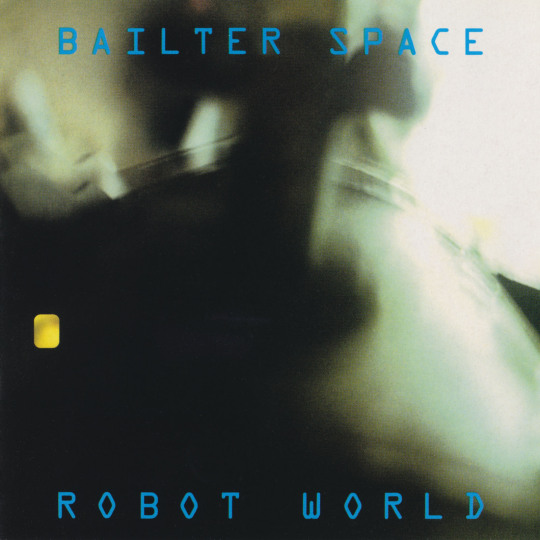
5:51 AM EST February 10, 2024:
Bailter Space - "Eip" From the album Robot World (April 8, 1993)
Last song scrobbled from iTunes at Last.fm
Release date given is for the US version through Matador. Robot World was the first album Matador released after inking the distribution deal with Warner Brothers.
File under: Atmospheric Noise
0 notes
Text
What a lady!

#The lego movie#I'm projared and I cheated on my wife#tlmgirlsweek#i have no mouth and i must scream#I love women#Eips off shirt and axraams#Tlm#tlm lucy#Wyldstyle
42 notes
·
View notes
Text
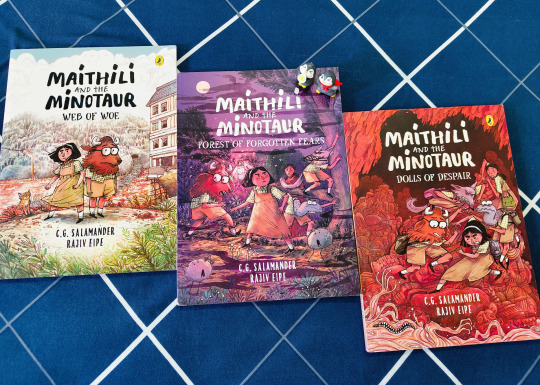

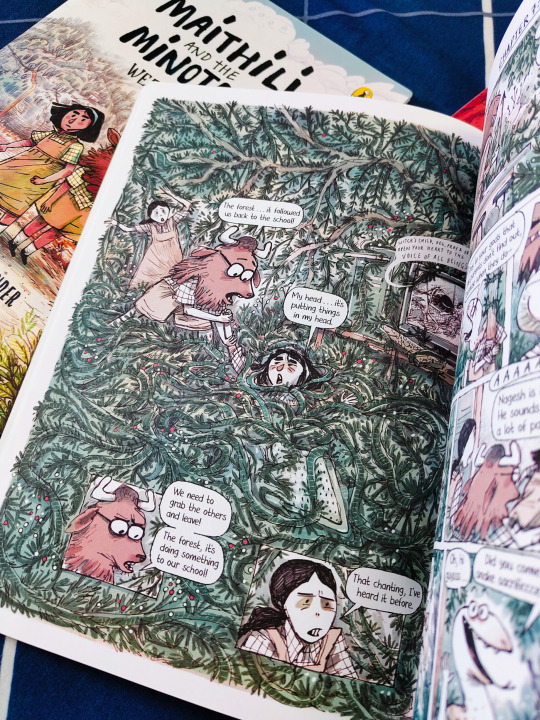
JOMP Book Photo Challenge
May 03, 2025 - Comic Books
A graphic novel with Indian and Greek mythology themes. And yes, that is a minotaur in a self-made maze (where he lost the TV remote).
#jompbpc#justonemorepage#maithili and the minotaur#c.g. salamander#rajiv eipe#booklr#mypics#books#bookblr#read#comics#graphic novels#book photo#book photography
23 notes
·
View notes
Text
How EIP Services Make a Difference
Early Intervention Programs (EIPs) are invaluable resources that provide crucial support to children with developmental delays or disabilities, offering them the opportunity to reach their full potential from a young age. Early Intervention Program in Malaysia play a significant role in shaping the lives of children and their families by addressing developmental challenges early on. This blog explores the importance of EIP services, their impact on child development, and how families can benefit from these specialized programs.
Understanding Early Intervention Programs
Early Intervention Program in Malaysia are designed to identify and address developmental delays or disabilities in children aged birth to six years old. These programs focus on enhancing the child's development through a variety of therapeutic interventions, educational strategies, and family support services. The goal is to intervene early when the brain is most adaptable, thereby maximizing the child's potential and improving long-term outcomes.
In Early Intervention Programs Subang Jaya are structured to cater to diverse needs, ranging from speech and language delays to cognitive impairments and motor skills challenges. These programs are typically interdisciplinary, involving professionals such as pediatricians, psychologists, therapists, and educators who collaborate to create personalized intervention plans for each child.
Benefits of Early Intervention Programs
Early Identification and Intervention: EIP services facilitate early identification of developmental delays, allowing for timely intervention when interventions are most effective. This early support can prevent delays from becoming more significant barriers to a child's development.
Individualized and Holistic Approach: Each child's needs are unique, and EIP services offer personalized intervention plans tailored to their specific developmental challenges. This holistic approach considers the child's strengths, interests, and family dynamics to provide comprehensive support.
Family-Centered Care: EIP services emphasize the importance of involving families in the intervention process. Families receive guidance, education, and resources to support their child's development at home, fostering a supportive environment that enhances learning and growth.
Improving Developmental Outcomes: Research consistently demonstrates that children who receive early intervention services show significant improvements in various areas, including communication skills, social interaction, academic achievement, and independence.
Preparation for School and Beyond: EIP services help prepare children for school readiness by addressing developmental milestones and equipping them with essential skills needed for academic success and social integration.
Early Intervention Programs in Kuala Lumpur and Subang Jaya
In Malaysia, particularly in urban centers like Early Intervention Program in Subang Jaya are readily accessible through specialized centers, hospitals, and community organizations. These programs offer a range of services tailored to meet the diverse needs of children and families, including:
Developmental Assessments: Comprehensive evaluations conducted by multidisciplinary teams to identify strengths and areas needing support.
Therapeutic Interventions: Individual or group therapy sessions focusing on speech and language development, occupational therapy, physical therapy, and behavioral interventions.
Educational Support: Early childhood education programs that promote cognitive, social, and emotional development through structured activities and play-based learning.
Parent Education and Support: Workshops, counseling sessions, and support groups for parents to learn about their child's development, acquire skills to support learning at home, and connect with other families facing similar challenges.
The Impact of EIP Services on Families For families in Kuala Lumpur and Subang Jaya, navigating the journey of early intervention can be transformative. Here’s how EIP services make a difference:
Empowerment: Families feel empowered with knowledge and skills to advocate for their child's needs and participate actively in their development.
Emotional Support: Access to professional guidance and peer support networks helps families navigate challenges and celebrate milestones together.
Enhanced Quality of Life: By addressing developmental delays early, EIP services contribute to improved family dynamics, reduced stress levels, and a more positive outlook on the future.
Long-term Benefits: Investing in early intervention yields long-term benefits, as children are better prepared for academic success, social interactions, and eventual independence.
Choosing the Right Early Intervention Program When selecting an Early Intervention Program in Kuala Lumpur or Subang Jaya, families should consider the following factors:
Credentials and Expertise: Ensure that the program employs qualified professionals with expertise in child development and early intervention.
Comprehensive Services: Look for programs that offer a range of services tailored to your child's specific needs, including therapeutic interventions, educational support, and family-centered care.
Collaboration and Communication: Choose a program that emphasizes collaboration between professionals and families, with clear communication channels and opportunities for parental involvement.
Accessibility and Convenience: Consider the location, hours of operation, and accessibility of the program to ensure it fits into your family's schedule and lifestyle.
Conclusion In conclusion, Early Intervention Programs in Kuala Lumpur and Subang Jaya are instrumental in supporting the developmental needs of young children and their families. By providing early identification, individualized interventions, and family-centered support, these programs pave the way for positive outcomes and brighter futures. Investing in early intervention not only enhances a child's developmental trajectory but also strengthens family resilience and community support networks. For families seeking to optimize their child's development and well-being, exploring EIP services can be a transformative step towards embracing the full potential of every child.
If you're in and considering Early Intervention Programs in Subang Jaya for your child, take the first step towards a brighter future by exploring the resources and support available through these invaluable services.
0 notes